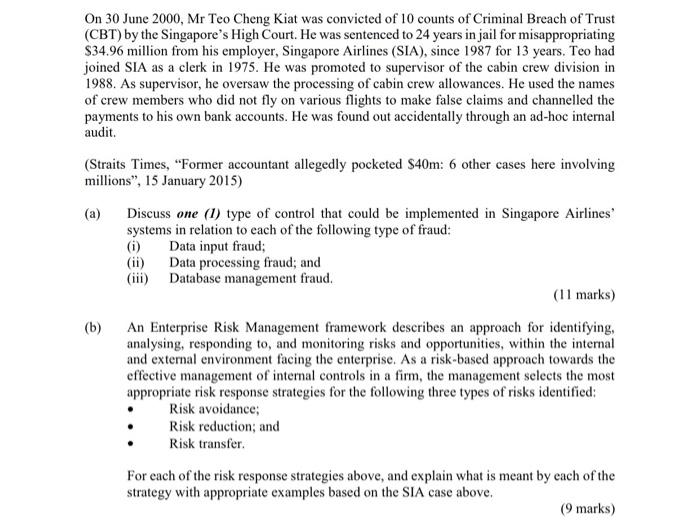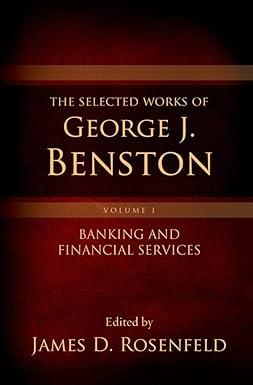On 30 June 2000, Mr Teo Cheng Kiat was convicted of 10 counts of Criminal Breach of Trust (CBT) by the Singapore's High Court. He was sentenced to 24 years in jail for misappropriating $34.96 million from his employer, Singapore Airlines (SIA), since 1987 for 13 years. Teo had joined SIA as a clerk in 1975. He was promoted to supervisor of the cabin crew division in 1988. As supervisor, he oversaw the processing of cabin crew allowances. He used the names of crew members who did not fly on various flights to make false claims and channelled the payments to his own bank accounts. He was found out accidentally through an ad-hoc internal audit. (Straits Times, "Former accountant allegedly pocketed $40m: 6 other cases here involving millions, 15 January 2015) (a) Discuss one (1) type of control that could be implemented in Singapore Airlines systems in relation to each of the following type of fraud: (i) Data input fraud; Data processing fraud; and (iii) Database management fraud. (11 marks) (b) An Enterprise Risk Management framework describes an approach for identifying, analysing, responding to, and monitoring risks and opportunities, within the internal and external environment facing the enterprise. As a risk-based approach towards the effective management of internal controls in a firm, the management selects the most appropriate risk response strategies for the following three types of risks identified: Risk avoidance; Risk reduction, and Risk transfer. For each of the risk response strategies above, and explain what is meant by each of the strategy with appropriate examples based on the SIA case above (9 marks) On 30 June 2000, Mr Teo Cheng Kiat was convicted of 10 counts of Criminal Breach of Trust (CBT) by the Singapore's High Court. He was sentenced to 24 years in jail for misappropriating $34.96 million from his employer, Singapore Airlines (SIA), since 1987 for 13 years. Teo had joined SIA as a clerk in 1975. He was promoted to supervisor of the cabin crew division in 1988. As supervisor, he oversaw the processing of cabin crew allowances. He used the names of crew members who did not fly on various flights to make false claims and channelled the payments to his own bank accounts. He was found out accidentally through an ad-hoc internal audit. (Straits Times, "Former accountant allegedly pocketed $40m: 6 other cases here involving millions, 15 January 2015) (a) Discuss one (1) type of control that could be implemented in Singapore Airlines systems in relation to each of the following type of fraud: (i) Data input fraud; Data processing fraud; and (iii) Database management fraud. (11 marks) (b) An Enterprise Risk Management framework describes an approach for identifying, analysing, responding to, and monitoring risks and opportunities, within the internal and external environment facing the enterprise. As a risk-based approach towards the effective management of internal controls in a firm, the management selects the most appropriate risk response strategies for the following three types of risks identified: Risk avoidance; Risk reduction, and Risk transfer. For each of the risk response strategies above, and explain what is meant by each of the strategy with appropriate examples based on the SIA case above (9 marks)







